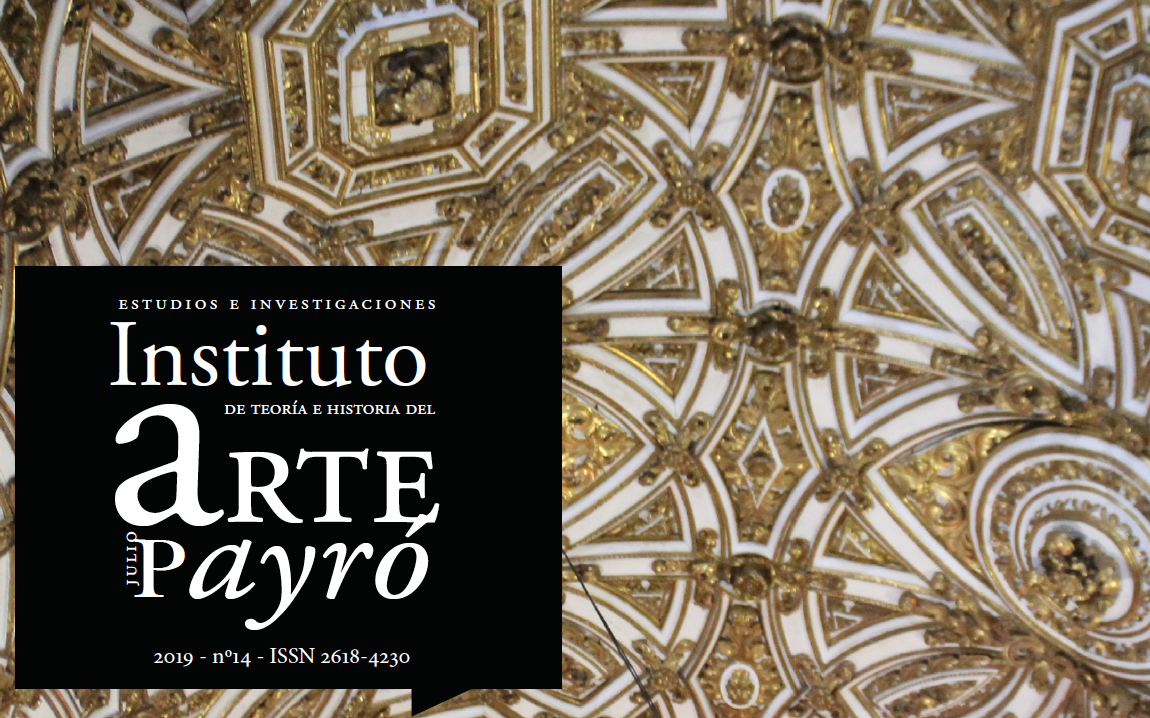Proteus’ Myth: A Reading proposal
Abstract
The purpose of this paper is to read the Proteus’ myth from the perspective of the hunting metaphor as the search for knowledge. Proteus is a sea god who has suffered throughout history different interpretations of rational or allegorical nature since his birth in Homer’s Odissey. His main features are his ability to metamorphose and the omniscience he shares with other marine deities.The seal shepherd lives as an amphibian between the sea and the land where in a moment of the day he lies in a grotto. These elements acquire a strong symbolic value regarding their prophetic knowledge. The Greek hero Menelao must interrogate the god to reach his homeland after the Trojan contest, he can only achieve that with the help of Eidothea, daughter of Proteus and holder of métis, slyness. The warrior must catch, hunt down Proteus to get the answer.Downloads
Download data is not yet available.
References
Bombassaro, L. (2007). Giordano Bruno y la metáfora de la caza en la Filosofía del Renacimiento. Eadem utraque Europa, 3 (4/5), 127-142.
Buxton, R. (2000). El imaginario griego. Los contextos de la mitología. Madrid: Akal.
D’Agostino, B. & Cerchiai, L. (1999). Il mare, la norte, l’amore. Gli Etruschi, i Greci e l’immagine. Roma: Donzelli.
Delattre, C. (2010). Protée insaissable entre mythe et fiction. En Rolet, A.(dir.). Protée en trompe l’oeil. Genèse et survivances d’un mythe, d’Homer à Bouchardon, pp. 49-61. Rennes: Presses Universitaires de Rennes. Edición en línea http://books.openedition.org/pur/38825.
Demargne, P. (1964). Nacimiento del Arte Griego. Madrid: Aguilar.
Floridi, L. (2017). Proteo tra esegesi razionalistiche, paradossografia e credulità popolare. A propósito diLuc. DMar 4. Acme, 70 (2), 131-144. DOI http://dx.doi.org/10.13130/2282-0035/9361.
Frontisi Ducroix, F. (2006). El hombre-ciervo y la mujer-araña. Figuras griegas de la metamorfosis. Madrid: Abada.
Ginzburg, C. (1989). Mitos, emblemas e indicios. Morfología e historia. Barcelona: Gedisa.
Granada, M. (2000). El umbral de la Modernidad. Barcelona: Herder.
Gourmeland, L. (2010). Protée tel qu’en lui-même: les metamorphoses de la parole poétique (Odyssée, IV, 351-586). En A. Rolet, (dir.). Protée en trompe l’oeil. Genèse et survivances d’un mythe, d’Homer a Bouchardon, (pp. 27-48). Rennes: Presses Universitaires de Rennes. Edición en línea http://books.openedition.org/pur/38833.
Pontani, F. (2011). El Universo es como tú Proteo. Selected readings of a Homeric Myth. Antike und Abeland. 57,129-150.
Trinquier, J. (2010). Protée en sa grotte ou le parti pris du phoque. En A. Rolet (dir.). Protée en trompe L’oeil. Genèse et survivances d’un mythe, d’Homer a Bouchardon, (pp. 63-103). Rennes: Presses Universitaires de Rennes. Edición en línea http://books.openedition/pur/38836.
Virasoro, M. (2000). Los griegos en escena. Buenos Aires: Eudeba.
Vermeulle, E. (1984). La muerte en la poesía y en el arte en Grecia. Méjico: FCE.
Buxton, R. (2000). El imaginario griego. Los contextos de la mitología. Madrid: Akal.
D’Agostino, B. & Cerchiai, L. (1999). Il mare, la norte, l’amore. Gli Etruschi, i Greci e l’immagine. Roma: Donzelli.
Delattre, C. (2010). Protée insaissable entre mythe et fiction. En Rolet, A.(dir.). Protée en trompe l’oeil. Genèse et survivances d’un mythe, d’Homer à Bouchardon, pp. 49-61. Rennes: Presses Universitaires de Rennes. Edición en línea http://books.openedition.org/pur/38825.
Demargne, P. (1964). Nacimiento del Arte Griego. Madrid: Aguilar.
Floridi, L. (2017). Proteo tra esegesi razionalistiche, paradossografia e credulità popolare. A propósito diLuc. DMar 4. Acme, 70 (2), 131-144. DOI http://dx.doi.org/10.13130/2282-0035/9361.
Frontisi Ducroix, F. (2006). El hombre-ciervo y la mujer-araña. Figuras griegas de la metamorfosis. Madrid: Abada.
Ginzburg, C. (1989). Mitos, emblemas e indicios. Morfología e historia. Barcelona: Gedisa.
Granada, M. (2000). El umbral de la Modernidad. Barcelona: Herder.
Gourmeland, L. (2010). Protée tel qu’en lui-même: les metamorphoses de la parole poétique (Odyssée, IV, 351-586). En A. Rolet, (dir.). Protée en trompe l’oeil. Genèse et survivances d’un mythe, d’Homer a Bouchardon, (pp. 27-48). Rennes: Presses Universitaires de Rennes. Edición en línea http://books.openedition.org/pur/38833.
Pontani, F. (2011). El Universo es como tú Proteo. Selected readings of a Homeric Myth. Antike und Abeland. 57,129-150.
Trinquier, J. (2010). Protée en sa grotte ou le parti pris du phoque. En A. Rolet (dir.). Protée en trompe L’oeil. Genèse et survivances d’un mythe, d’Homer a Bouchardon, (pp. 63-103). Rennes: Presses Universitaires de Rennes. Edición en línea http://books.openedition/pur/38836.
Virasoro, M. (2000). Los griegos en escena. Buenos Aires: Eudeba.
Vermeulle, E. (1984). La muerte en la poesía y en el arte en Grecia. Méjico: FCE.
Published
2022-09-01
How to Cite
Macri, M. del R. (2022). Proteus’ Myth: A Reading proposal. Estudios E Investigaciones, 14, 79-88. Retrieved from http://revistascientificas.filo.uba.ar/index.php/payro/article/view/11779
Issue
Section
Artículos







